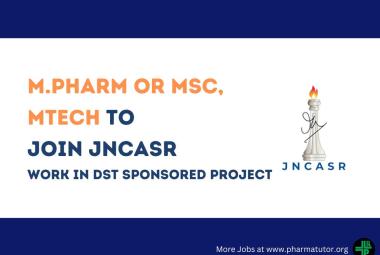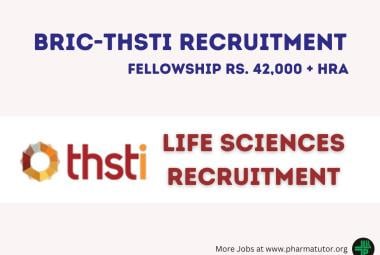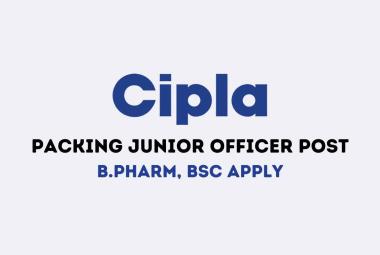ABOUT AUTHORS:
Lalit F. Raiyani*1, Dharanant V. Borakhatariya2, Bhargav D. Patel3, Kuldip R. Marwada4, Dr.Priti D. Trivedi5, Mr.Rajendra K. Patel6
1Parul institute of Pharmacy, Vadodara
2B. K. Modi Government Pharmacy College, Rajkot
3Ramanbhai Patel College of Pharmacy, Changa
4R. K. College of Pharmacy, Rajkot
5Professor at K. B. Institute of Pharmaceutical Education and Research, Gandhinagar
6Lecturer at K. B. Institute of Pharmaceutical Education and Research, Gandhinagar
*lalitraiyani@gmail.com
ABSTRACT:
A simple, rapid, sensitive, precise and accurate UV-spectrophotometric method (absorbance ratio) was developed and validated for simultaneous estimation of Diclofenac sodium and Eperisone hydrochloride in pharmaceutical capsule dosage form. In absorbance ratio method absorbance measurement of sample at 239.2 nm (isoabsorbtive point, λ1) and 256 nm, λ2.The absorbance ratio method was developed using methanol as solvent. Developed method is linear between 4-12µg/ml and 5-15µg/ml for diclofenac sodium and eperisone hydrochloride respectively. The mean % recovery was found to be 99.68% & 99.14% for diclofenac sodium and eperisone hydrochloride respectively.
REFERENCE ID: PHARMATUTOR-ART-1754
1. INTRODUCTION
Diclofenac sodium (Sodium [o-(2, 6-dichloroanilino) phenyl] acetate)[1][Figure 1a] is Nonsteroidal anti-inflammatory drug. It acts as nonselective inhibitors of the enzyme cyclo oxygenase (COX). COX catalyzes the formation of prostaglandins and thromboxane from arachidonic acid (itself derived from the cellular phospholipids bilayer by phospholipase A2). Prostaglandins act (among other things) as messenger molecules in the process of inflammation[2].Eperisone hydrochloride[(2RS)-1-(4-Ethylphenyl)-2-methyl-3-piperidin-1-ylpropan-1-one monohydrochloride][Figure 1b][3,4]iscentrally acting muscle relaxant drug used for lower back pain (LBP)Its peculiar mechanism of action is believed to blockade both sodium and calcium voltage-gated channels exerting its activity mainly on the spinal cord structures by reducing the gamma-efferent firing and inhibiting the spinal cord activities Furthermore, eperisone (EPS) have also shown some vasodilator activity with a consequent increase in muscle blood perfusion , and it exerts an antinociceptive effect by antagonistic activity on P substance , Because of its mechanisms of action, EPS is almost devoid of the side effects on CNS that are often reported with other centrally acting muscle relaxants[5]. Literature survey reveals that only one method is available for the simultaneous estimation of diclofenac sodium and eperisone hydrochloride by UV spectroscopy using simultaneous equation method in synthetic mixture prepared in laboratory[6]. So aim of present study is to developedsimple, rapid, precise and accurate spectrophotometric method for simultaneous estimation of diclofenac sodium and eperisone hydrochloride in pharmaceutical capsule (Eperisan-d, SR) dosage form without any interference of excipient present in dosage form.
2. EXPERIMENTAL:
2.1 Materials and methods:
Chemical.
Diclofenac sodium was obtained as gift sample from Montage Laboratories, Himatnagar, and Gujarat, India. Eperisone hydrochloride was obtained as gift sample from Sun Pharma Pvt. Ltd., Jammu, India. Methanol AR grade is used as solvent.
Instrumentation.
The dual wavelength Spectrophotometric method was developed using A double beam UV-Visible Spectrophotometer, (SHIMADZU, Japan Model: 1800) having a pair of 10 mm matched quartz cuvettes, which was used to measure absorbance of the resulting solutions, spectra were automatically obtained by UV-Probe system software. An analytical balance (CP 124S, Sartorius, Germany) was used to weigh accurately the standard and test samples, an ultrasonic bath (Fast clean, Toshniwal process instrument Pvt. Ltd., Ajmer, India) were used in study. All the solutions were filtered using whatman filter paper no.41.
Preparation of standard stock solution.
Diclofenac Sodium standard stock solution (sss).
An accurately weighed quantity of Diclofenac Sodium (10 mg) was transferred in 10 mL volumetric flask, dissolved in sufficient quantity of methanol and volume was made up to the mark with methanol (concentration: 1000 µg/mL).
Eperisone hydrochloride standard stock solution (sss).
An accurately weighed quantity of Eperisone hydrochloride (10 mg) was transferred in 10 mL volumetric flask, dissolved in sufficient quantity of methanol and volume was made up to the mark with methanol (concentration: 1000 µg/mL).
Preparation of working standard solution (wss).
1 ml of each sss was taken into 10 ml volumetric flask separately and diluted up to 10 ml using methanol to get 100 µg/mL (wss) of Diclofenac sodium and eperisone hydrochloride, then suitable dilutions were made to prepare a mixture containing a working range of 4-12 µg/mL of diclofenac sodium and 5-15 µg/mL of eperisone hydrochloride using methanol into 10 mL volumetric flask.
Selection of analytical wave length.
In the quantitative assay of two components in admixture by the absorbance ratio method, absorbances are measured at two wavelengths. One being the λmax of one of the component is λ2 and other being a wavelength of equal absorption of two component known as isoabsorbtive point λ1 [7].Appropriate dilution were made of each drug and scan the solution in the range of 400 nm to 200 nm. Over lay spectrum of the both drug(Figure 2) shows 239.2 nm is isoabsorbtive point (λ1), and 256 nm λmax of eperisone (λ2).
2.2 Assay procedure of Marketed formulationby absorbance ratio method:
An accurately weighed 20 capsule (Diclofenac sodium-100mg+Eperisone hydrochloride-150mg, Eperisan-d SR). Remove the content from capsule and triturate it. Now, equivalent quantity of powder to about 100 mg of diclofenac sodium and 150 mg of eperisone hydrochloride was transferred to 100ml volumetric flask add 70ml of methanol and sonicated for 25 min. The volume was made up to the mark using methanol as solvent. The resulting solution was filtered through Whatman filter paper no.41. Above filtrate was appropriately diluted to get concentration of 100 μg/ml of diclofnac sodium and 150 μg/ml of eperisone hydrochloride. From the above prepared solution, 7 ml was transferred in 10 ml volumetric flask; volume is made up to mark with methanol to get final concentration of Diclofenac sodium (7μg/ml) and eperisone hydrochloride (10.5μg/ml). The absorbance was measured at the selected wavelengths and concentrations were determined.
3. METHOD VALIDATION.[8]
Linearity and range.
The linearity curve is obtained by plotting specific range of concentration against absorbance obtained. Statically linearity was calculated by regression co efficient.(Figure 3)
Precision.
Precision of the methods was determined by performing method repeatability studies, intraday precision, and interday precision. In repeatability study, mixture of both drugs (7μg/ml diclofenac sodium & 10.5μg/ml eperisone hydrochloride) was analyzed six times. In intraday precision were analyzed three times in a day for 2 hrs time interval. In interday precision were analyzed in three consecutive days.
Limits of detection (LOD) and Limit of quantification (LOQ).
The LOD and LOQ of this method were calculated by using following equations:
Limit of detection:
LOD = 3.3×S.D./S
Limit of Quantification:
LOQ = 10×S.D./S
Where, S.D. = the Standard deviation of the response,
S = Slope of calibration curve.
Accuracy.
Accuracy of the developed method was studied by percentage recovery studies of both the drug in formulation by using standard addition method at three different levels. Standard addition of drug in test mixture was 80%, 100% and 120% of test amount taken.
4. RESULT AND DISCUSSION.
Overlay spectrum of both drugs are shows that absorbance ratio spectrophotometric method is suitable for simultaneous estimation of both the drugs. Validation of developed method was performed according to ICH guide line.
Assay of marketed formulation:
% label claim of the marketed formulation for the content of API was found to be 98.21%w/w and 97.63%w/w for diclofenac sodium and eperisone hydrochloride respectively. (Table no.1)
Method validation:
Linearity:
Propose method follow beer’s law for the range of 4-12μg/ml for diclofenac sodium and 5-15 μg/ml for eperisone hydrochloride the regression equations of calibration curves shown in, (Figure 4 & Table no. 2)
Precision:
Precision of the methods was determined by performing method repeatability studies, intraday precision, and interday precision. Precision study concentration of diclofenac sodium 7μg/ml and eperisone hydrochloride 10.5 μg/mL was used. %RSD of was found to be within limit of ICH guide line. (Table no. 2)
Accuracy:
The percentage recoveries of drugs from marketed formulation were determined by standard addition of drugs at three known concentrations level and excellent recoveries were obtained at each level. The percent recovery for diclofenac sodium was found to be a 98.63 % and percent recovery for eperisone hydrochloride was found to be 99.14%. The results of accuracy studies are shown in, (Table no. 3)
5. CONCLUSION.
Based on results obtained it can be concluded that the proposed absorbance ratio spectrophotometric method gives simple, sensitive, rapid, accurate and precise results for determination of diclofenac sodium and eperisone hydrochloride in commercial marketed formulation (capsule). The proposed absorbance ratio method is simple, rapid and sensitive for determination of both the drugs. Method validation has been performed by linearity, accuracy, precision, LOD and LOQ. The proposed method can be successfully applied for the routine analysis of diclofenac sodium and eperisone hydrochloride in pharmaceutical dosage form.
6. ACKNOWLEDGEMENT.
The authors are thankful to K. B. Institute of Pharmaceutical Education And Research, Gandhinagar for providing the facilities for the work. The authors are also thankful to Montage Laboratories for provide me diclofenac sodium API, and Sunpharma Pvt. Ltd for provide me eperisone hydrochloride.
Table1. Assay of marketed formulation.
|
Label claim |
Amount found |
% Label claim |
|||
|
|
|
|
|||
|
Diclo |
Epe |
Diclo |
Epe |
Diclo |
Epe |
|
100 |
150 |
98.71 |
146.00 |
98.71 |
97.33 |
|
100 |
150 |
97.31 |
146.78 |
97.31 |
97.85 |
|
100 |
150 |
98.63 |
146.57 |
98.63 |
97.71 |
|
Mean SD %RSD |
98.21667 |
97.63 |
|||
|
0.786215 |
0.269072 |
||||
|
0.80 |
0.27 |
||||
Table 2. Validation Parameter.
|
Parameter |
Diclofenac sodium |
Eperisone hydrochloride |
|
|
|
|
|
Linearity |
4-12 μg/ml |
5-15μg/ml |
|
Correlation coefficient |
0.997 |
0.998 |
|
Slope |
0.040 |
0.054 |
|
Precision |
%RSD |
|
|
Repeatability(n=6) |
1.37 |
0.39 |
|
Intraday(n=3) |
1.53 |
0.63 |
|
Interday(n=3) |
1.66 |
0.48 |
|
% recovery |
99.68 |
99.14 |
|
LOD |
0.127μg/ml |
0.187μg/ml |
|
LOQ |
0.385μg/ml |
0.569μg/ml |
|
Regression equation |
y = 0.040x + 0.031 |
y = 0.054x + 0.033 |
Table 3. Percentage recovery study.
|
Amount taken |
Amount added |
Total amount |
%recovery ±SD (n=3) |
||||
|
|
|
|
|
||||
|
Diclo |
Epe |
Diclo |
Epe |
Diclo |
Epe |
Diclo |
Epe |
|
7 |
10.5 |
5.6 |
8.4 |
12.6 |
18.9 |
98.54±1.14 |
97.67±0.31 |
|
7 |
10.5 |
7 |
10.5 |
14 |
21 |
100.15±0.73 |
99.73±0.11 |
|
7 |
10.5 |
8.4 |
12.6 |
15.4 |
23.1 |
100.36±0.92 |
99.68±0.26 |
|
Mean % RSD |
0.93 |
0.23 |
|||||
REFERENCE:
1. The United States Pharmacopoeia35-National Formulary, The United States Pharmacopoeial Convention Inc., Rockville, Vol-II, 2881, 2012.
2. Warden S J, "Prophylactic Use of NSAIDs by Athletes: A Risk/Benefit Assessment." The Physician and Sports Medicine, 38(1), 132–138, 2010.
3. The Japanese Pharmacopoeia XV, Ministry of Health labour and welfare, 618, 2006.
4. The Merck Index 14th edition, published by Merck research laboratories, 615, 2008.
5. Barbara M, Cateno P, Daniela C V, Maria R M, “human pharmacokinetic of muscle relaxant Eperisone hydrochloride by liquid chromatography – electrospray tandem mass spectroscopy.” Eur J Drug metabpharmacokinet, 36, 71-78, 2011.
6. Patel P U, Patel S K and Pate U J, “Spectrophotometric method for simultaneous estimation of eperisone hydrochloride and diclofenac sodium in synthetic mixture.” International research journal of pharmacy, 3(9), 203-206, 2012.
7. Beckett A H and Stanlake J B, practical pharmaceutical chemistry, 4th edition, part-II, 286-287.
8. ICH harmonized tripartite guideline, validation of anytical procedures text and methodology, Q2 (R1), 2005.
NOW YOU CAN ALSO PUBLISH YOUR ARTICLE ONLINE.
SUBMIT YOUR ARTICLE/PROJECT AT articles@pharmatutor.org
Subscribe to Pharmatutor Alerts by Email
FIND OUT MORE ARTICLES AT OUR DATABASE










.png)


